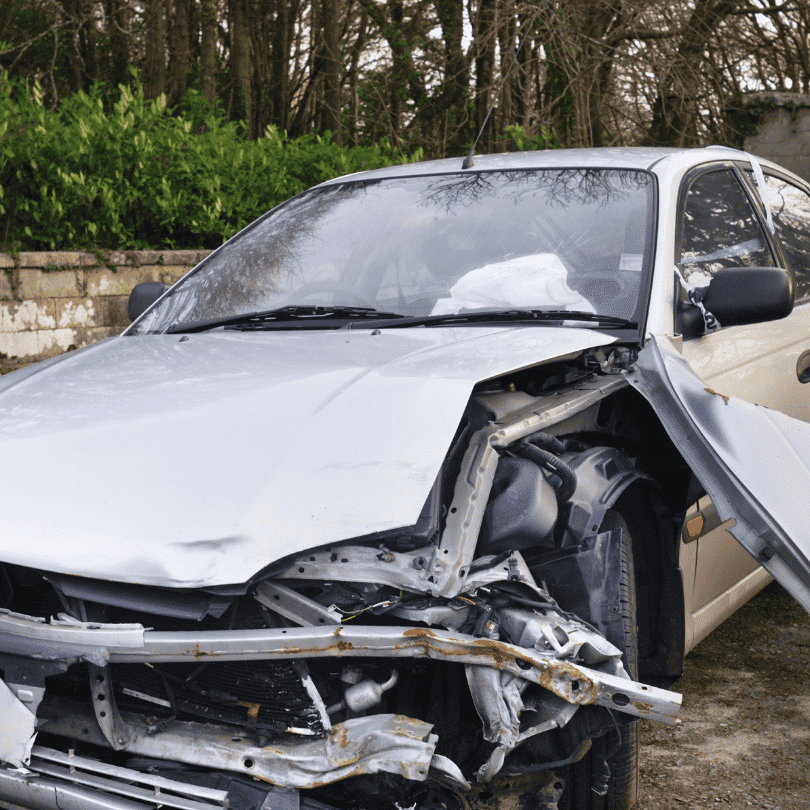
Car accidents can cause anything from minor dents to catastrophic damage.
When a vehicle is so badly damaged that repairing it is uneconomical or unsafe, it’s classified as a write-off.
Knowing what this means and how insurers determine write‑offs helps you make informed decisions after an accident.
Factors That Influence Write‑Off Decisions
-
Severity of Damage: Extensive structural damage, critical component failures or compromised safety systems can push a car into write‑off territory,
-
Repair Costs vs. Market Value: Insurers compare the estimated repair cost to the vehicle’s market value. In many cases, if repairs approach 70 % of the car’s pre‑accident value, declaring a total loss is more cost‑effective.
-
Safety Considerations: Even if repairs are technically possible, vehicles that cannot be made safe for the road are generally written off to protect motorists.
Types of Write‑Offs
-
Statutory Write‑Offs – A statutory write‑off is a vehicle so badly damaged that it is considered unsafe for road use. In New South Wales (NSW), such vehicles cannot be re‑registered; they can only be dismantled for parts or sold as scrap to a wrecker.
-
Repairable Write‑Offs – These vehicles have sustained heavy damage but can be repaired and returned to the road. Repairs must meet government regulations and the vehicle must pass safety inspections before it can be driven again. Note: NSW does not permit re‑registration of any vehicle once it appears on the Written‑Off Vehicles Register (WOVR).
What To Do After Your Car Is Written Off
-
Notify Your Insurer: Contact your insurance company immediately. They’ll explain the claims process and outline the documents you need
-
Understand Your Payout: The payout amount depends on your policy, the pre‑accident value, and applicable excess fees
-
Dispose of the Vehicle: If the insurer doesn’t retain it, you can sell the written‑off car to a wrecker, put it up for auction or part it out
-
Cancel Your Registration: In NSW, cancelling your registration through Service NSW will allow you to claim any remaining registration refund
If You Don’t Have Insurance
Selling your written‑off car directly to a wrecker is often the easiest option. You’ll avoid the hassle of parting out the vehicle yourself and can often receive free removal plus cash depending on its condition
How to Prevent Write‑Offs
-
Routine Maintenance: Regular servicing and inspections identify issues before they become severe
-
Safe Driving: Obeying traffic laws, staying attentive behind the wheel and keeping a safe following distance greatly reduce the likelihood of serious accidents
Frequently Asked Questions
-
Is my car automatically a write‑off after an accident? No. Insurers have assessors inspect the damage, considering the cost and availability of parts, the car’s age and safety implications. If repair costs reach roughly 50–70 % of the vehicle’s value, it’s typically written off
-
Can I keep the car after a write‑off? Insurers usually retain the vehicle for sale or auction. If they allow you to keep it, you’ll need to cancel the registration and ensure it’s disposed of properly
-
Can a written‑off car be repaired? Under NSW regulations, vehicles on the WOVR cannot be legally repaired or re‑registered except in rare circumstances
-
What if the vehicle was stolen? The national written‑off vehicle scheme exists partly to prevent stolen car parts from being used illegally, so assessors and police monitor write‑offs closely.
Final Words
Knowing how car write‑offs work helps you navigate insurance claims, decide on disposal options and avoid costly mistakes. By understanding the difference between statutory and repairable write‑offs and taking preventive measures, you can protect both your safety and your finance.
How Metro Car Removal Sydney Can Help
If your car has been written off and you need it removed quickly, Metro Car Removal Sydney offers free towing and pays cash for damaged or unregistered vehicles.
The team handles all paperwork and provides competitive rates in the Sydney areaFor a no‑obligation quote, call 0422 600 833.
